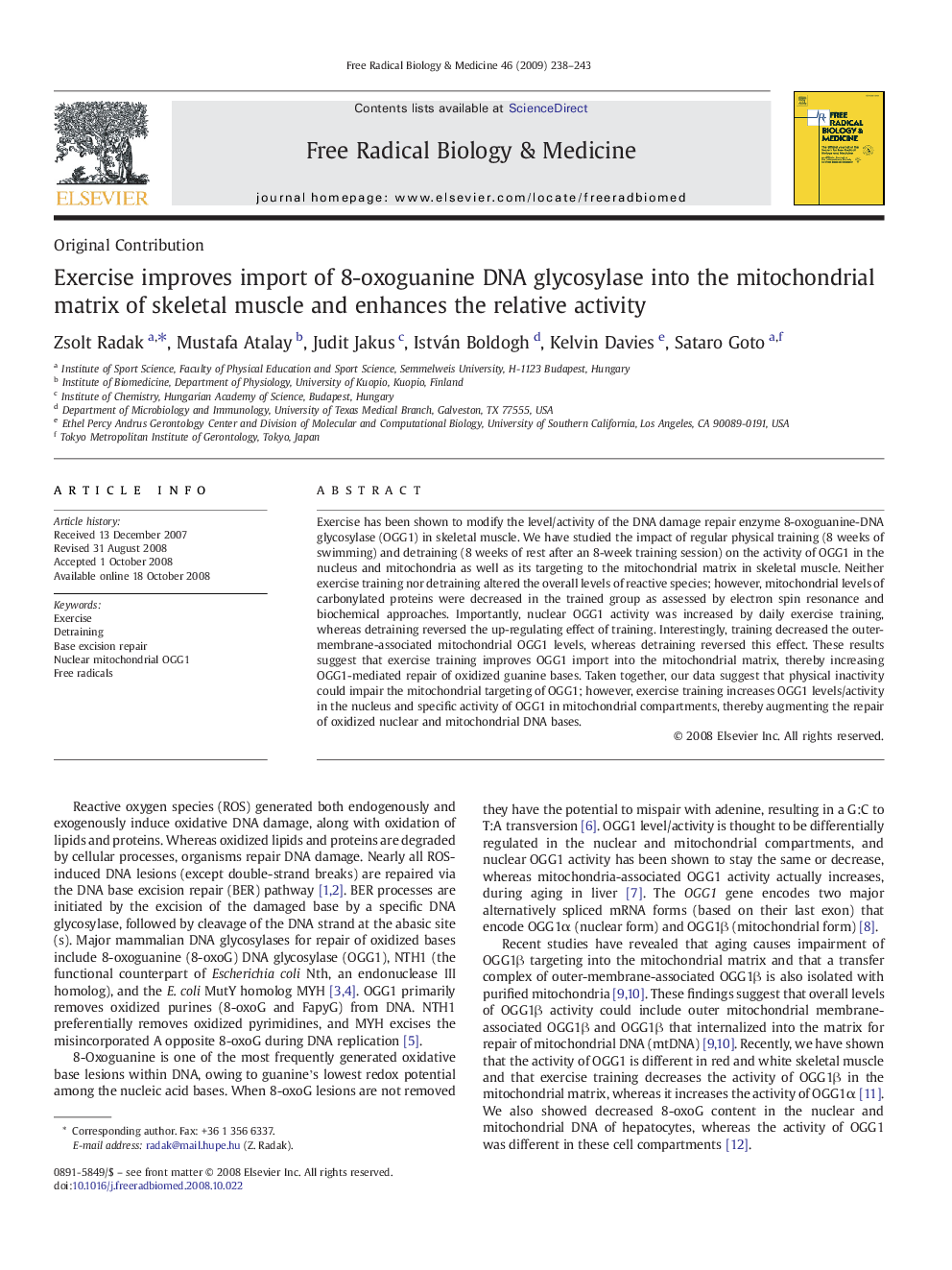| Article ID | Journal | Published Year | Pages | File Type |
|---|---|---|---|---|
| 1910469 | Free Radical Biology and Medicine | 2009 | 6 Pages |
Abstract
Exercise has been shown to modify the level/activity of the DNA damage repair enzyme 8-oxoguanine-DNA glycosylase (OGG1) in skeletal muscle. We have studied the impact of regular physical training (8Â weeks of swimming) and detraining (8Â weeks of rest after an 8-week training session) on the activity of OGG1 in the nucleus and mitochondria as well as its targeting to the mitochondrial matrix in skeletal muscle. Neither exercise training nor detraining altered the overall levels of reactive species; however, mitochondrial levels of carbonylated proteins were decreased in the trained group as assessed by electron spin resonance and biochemical approaches. Importantly, nuclear OGG1 activity was increased by daily exercise training, whereas detraining reversed the up-regulating effect of training. Interestingly, training decreased the outer-membrane-associated mitochondrial OGG1 levels, whereas detraining reversed this effect. These results suggest that exercise training improves OGG1 import into the mitochondrial matrix, thereby increasing OGG1-mediated repair of oxidized guanine bases. Taken together, our data suggest that physical inactivity could impair the mitochondrial targeting of OGG1; however, exercise training increases OGG1 levels/activity in the nucleus and specific activity of OGG1 in mitochondrial compartments, thereby augmenting the repair of oxidized nuclear and mitochondrial DNA bases.
Related Topics
Life Sciences
Biochemistry, Genetics and Molecular Biology
Ageing
Authors
Zsolt Radak, Mustafa Atalay, Judit Jakus, István Boldogh, Kelvin Davies, Sataro Goto,
